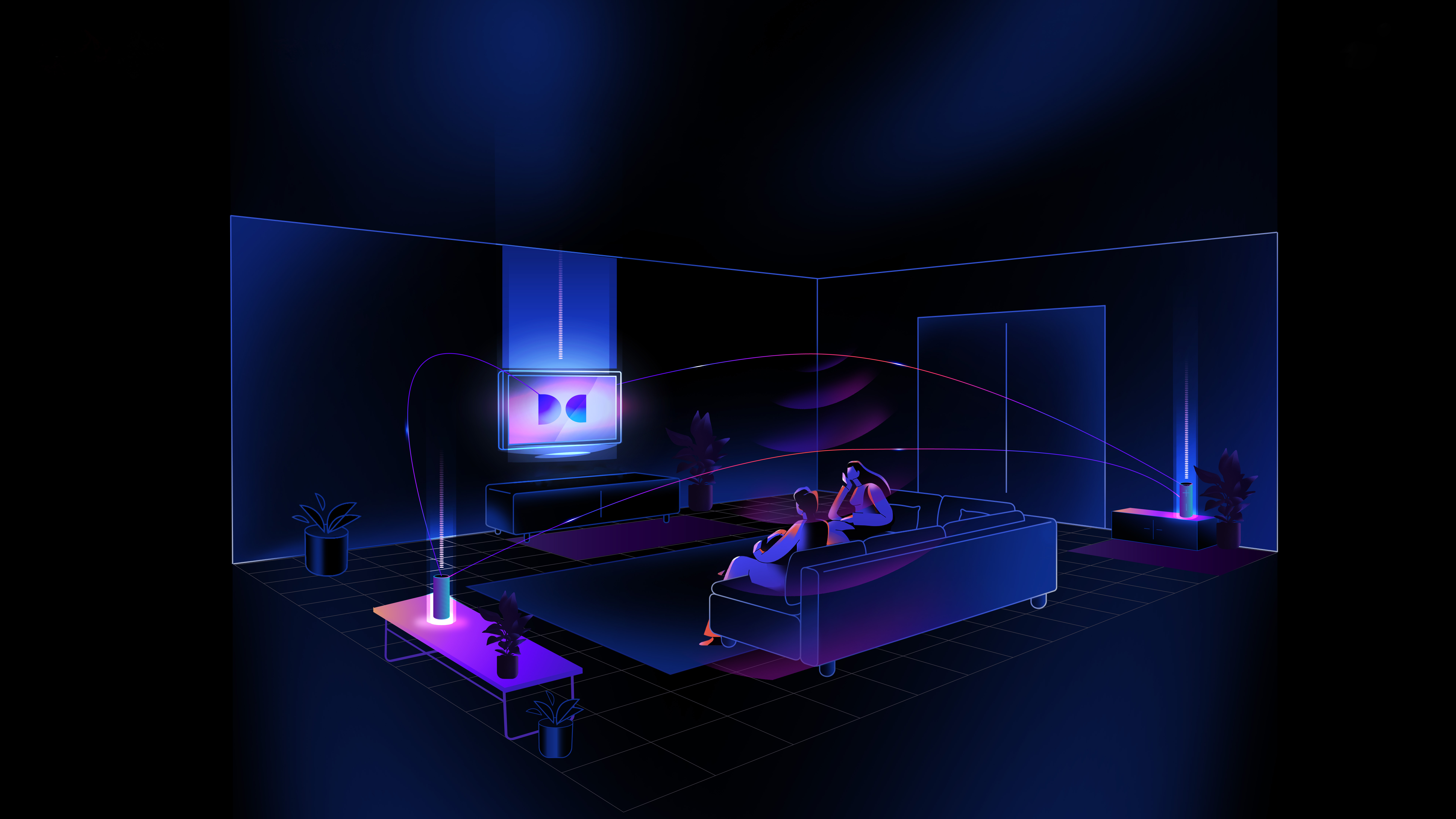Dolby Atmos FlexConnect could make immersive audio better and easier
Dolby promises a quick calibration process will bring surround sound to any home

Dolby has been the top name in surround sound for decades. Now the audio tech company has unveiled a much easier way to bring its powerful and immersive sound experience into your home.
Dolby Atmos FlexConnect is a new iteration of Dolby Atmos that enables you to pair your TV's sound system with certified wireless speakers. The interesting thing here is that sound is then optimized for any room layout and speaker setup, so you don't need to agonize about perfect speaker placement anymore.
TV brand TCL will be the first to launch Dolby Atmos FlexConnect-enabled TVs, as well as a line of speakers to go with them.
How does Dolby Atmos FlexConnect work?
Dolby Atmos sound is already fantastic and integrated into some of the best Dolby Atmos soundbars and speakers. But it requires a very specific setup. Some rooms are small, have a strange layout, are filled with too much furniture or there simply aren't enough power outlets around. All of these factors can make it difficult, or even impossible, to set up and calibrate it accurately.
Dolby claims FlexConnect is the answer. This new technology allows you to get the convenience of the way wireless audio currently works but with Dolby Atmos sound immersion.
It doesn't require additional equipment or cables but instead uses what Dolby calls acoustic mapping. This utilizes the microphones in a compatible TV to understand where every FlexConnect speaker is in the room, regardless of the size of the room or whether there's furniture in the way.
After this quick and automatic calibration process is over, audio is then intelligently balanced between the TV and the speakers. Sounds are placed around your room accurately in a 360-degree soundscape, bringing you an Atmos experience wherever you're sitting.
Sign up for breaking news, reviews, opinion, top tech deals, and more.
We don't have an official launch date for the Dolby Atmos FlexConnect certified TVs from TCL yet, but they'll be showcased at IFA 2023. We expect that, over time, this new technology will be adopted by other TV brands. If it delivers, it could completely transform the home cinema experience but will require a new TV to benefit from it.
You might also like

Becca is a contributor to TechRadar, a freelance journalist and author. She’s been writing about consumer tech and popular science for more than ten years, covering all kinds of topics, including why robots have eyes and whether we’ll experience the overview effect one day. She’s particularly interested in VR/AR, wearables, digital health, space tech and chatting to experts and academics about the future. She’s contributed to TechRadar, T3, Wired, New Scientist, The Guardian, Inverse and many more. Her first book, Screen Time, came out in January 2021 with Bonnier Books. She loves science-fiction, brutalist architecture, and spending too much time floating through space in virtual reality.